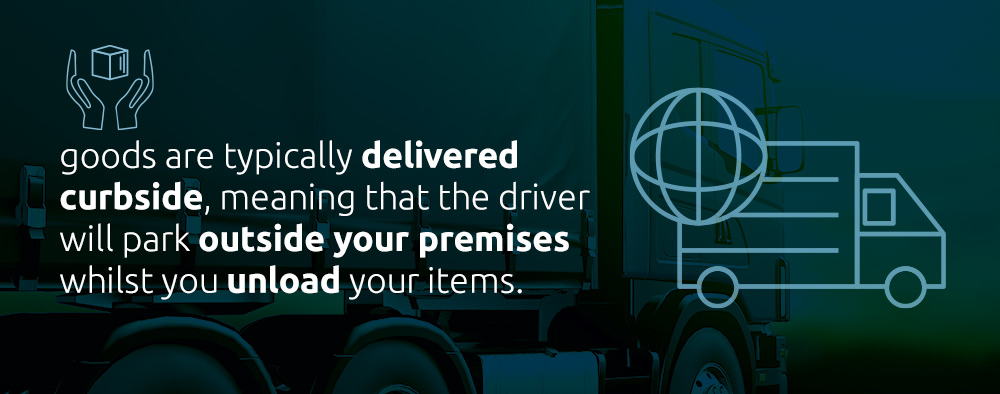How are my goods going to be delivered?
When importing goods to the UK, goods are typically delivered curbside, meaning that the driver will park outside your premises whilst you unload your items from the vehicle – the unloading process is your responsibility to complete within your designated window, and so you may need a friend to help you. The haulier will deliver the goods on any sized truck available to them (up to a 40 foot articulated lorry), and deliver them between 9am and 5pm unless specified otherwise.

Standard Curtain Sided & Tail Lift Delivery
You may need a tail lift truck to transport your products if you don’t have access to a forklift and your goods are heavy. The pump truck will carry your products to the rear of the vehicle where they will be lowered to the ground using the tail lift. A small fee from the haulier will be incurred by these deliveries.
Standard Delivery
The customer’s responsibility to unload the truck manually or with a forklift. If you don’t have access to the latter, you may need a tail lift to lower your goods which will usually cost about £30.
Tail Lift Delivery
These are usually restricted to pallets that weigh less than 1000kg – the driver will drop the pallet and move it a short distance if possible.
FCL Delivery
Much like standard deliveries, deliveries of full container loads are curbside, meaning that the container arrives on the back of the truck and you will have a designated timeslot of three hours to unload from the time of arrival. You will probably need a few extra pairs to help unload as the driver will not be insured to help you do so.
Unloading containers
For full containers, tail lift deliveries will not be an option and you will be unable to utilise a forklift unless you have a loading bay at your delivery location or, simply to take loose cartons made into pallets at the rear of the container floor. How you will unload will be dependent upon exactly how your products are loaded and the kind of lifting equipment you have available – including manual.
We recommend asking your supplier how they loaded your container to help you plan ahead.
If your goods aren’t crated it is likely that your cartons will be loaded individually. This is the most popular method of loading as suppliers can load more into a container when pallets aren’t used, meaning that it is likely that you will have to unpack the container by hand.
Things to consider…
- The container will not be lowered for you – you will be required to unload your goods from the container.
- The container seal – the container will be closed with a plastic-covered/metal seal added by your supplier. This means you will know if the container has been opened by anyone during transit. You can identify if the container’s seal has been broken by customs as they will add their own. You will need cutting equipment in order to remove the seal on the container.
- Don’t be late – you will be allocated three hours by your shipping line to unload, and you will be charged £50 per additional hour beyond this. Make sure you choose a convenient time slot.
- Size of vehicle – if you have small premises or there are narrow roads to access your location, you can request a smaller vehicle which can be provided without extra cost if you give sufficient notice.
Delivering with Amazon
Westbound are proud to offer the option to deliver goods directly from your supplier in Asia to an Amazon Fulfilment Centre in the UK. Your goods will be unpacked from the container at your UK port and be palletised.
Assuming you have set up the Amazon plan on your Seller Central Account as an LTL / less than truck-load, Amazon will be able to generate your pallet labels to send to us so we can apply them to each of your pallets.
Here at Westbound we will then request a delivery slot and book the truck to deliver your products to a suitable Amazon warehouse to be unloaded, and your goods will show on your Seller Central account within a matter of days.
Large cargo
If your shipment has a length or width over 120cm it is likely that they will be unable to fit on a tail-lift and considered as oversized or out of gauge. If this is the case, you will need to plan ahead to make sure you can remove your shipment from the truck. If you do not have a fork-lift on-site, you will need to consider the following options to avoid extra costs as delivery trucks do not carry lifting equipment:
- Borrow a forklift
- Break down the crates
- Hire a specialist vehicle, such as a HIAB or a Moffat truck